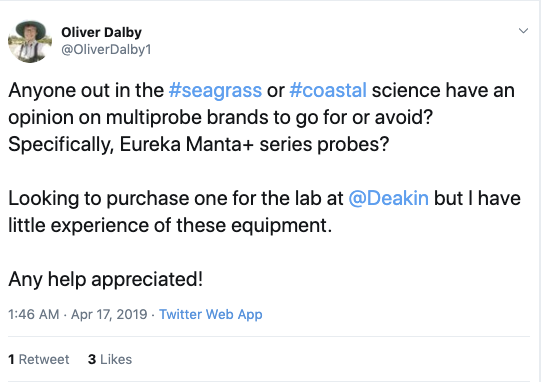The extensive number of blogs and articles written about marketing to millennials is staggering, but not surprising. This demographic, which includes people born between 1980 and the late 1990s, outnumber both Generation X and even the baby boomers. In addition to this, millennials are getting wealthier: By the year 2020, their spending potential is projected to reach 1.4 trillion.
However, while this generation holds a lot of future potential, their average annual spending remains lower than older generations and many brands have found it difficult to craft millennial marketing strategies that are effective.
Why is that? Why is this generation so difficult to reach and how can you tailor your science marketing campaign to reach an audience in their 20s and 30s, poised to take over purchasing power?
Below we discuss some of the key characteristics of this generation and review some best practices for marketing to millennials.
Two Peas in a Pod: Millennials and the Digital Age
You can’t mention millennials without first mentioning the digital age that became the backdrop for their childhood. Millennials were the first generation to come of age with the internet (America Online (AOL) began infiltrating everyday households in the year 2000). This has shaped how they acquire new information, get their news, socialize, become aware of and research brands, and importantly, make purchases.
Millennials find it easy to navigate the internet and are incredibly tech-savvy. They know how to use computers, but also witnessed the birth of the smartphone and its global growth in popularity. With 97% of millennials owning smartphones, this generation is accustomed to having the internet and email at their fingertips, 24 hours a day.
Why should you, a marketing director trying to sell expensive lab equipment, care? With more millennials finding their way towards purchasing authority, the digital practices that they use in their personal lives have become a major part of how they operate in their careers. According to one study, this generation represents the largest cohort of buyers researching B2B purchases online.
Millennials also saw the birth of social media, and with their ability to be connected at all times, have become used to sharing their experiences in real life with their online networks. But if you think it’s just about posting pictures of their meals to Instagram, you’re behind the times. Millennials – and other generations as well – routinely turn to their networks for professional advice. This includes what lab equipment to buy, or customer service issues.

Most popular channels remain the obvious ones: Facebook, Twitter, Instagram, and Snapchat, or more career-focused channels like LinkedIn. These channels have become a focal point for brand interaction and 31% of millennials say that social media influences their purchases.
While millennials may engage with a brand via social media, engagement doesn’t equal trust. They are very wary of brands and advertising (including television), with 84% of millennials saying that they don’t like traditional marketing and don’t trust it. But it’s not all bad news. Millennials also value authenticity: Some 43% rank authenticity as more important than brand content. For example, they’re open to seeing ads when it’s coming from an influencer. Many millennials consult with informational blogs written by influencers or friends, and more than 90% would consider purchasing a product if a friend recommended it.
Best Practices for Marketing to Millennials
So, how can you take this information and turn it into an actionable campaign that will benefit your brand? It is clear that millennials expect a lot from brands. They are also the most educated generation to date (around 40 percent have a bachelor’s degree). Many more went back for master’s degrees and even PhDs as the economic recession of the mid-2000s severely limited their job opportunities.
Here are some tips for constructing your millennial marketing strategies:
Be a Social Butterfly: If your brand isn’t already engaging with millennials on social media — hop to it! And don’t expect to move the needle with just a few posts here and there. Create valuable, informative, and appealing content that draws your potential buyers in and can be shared with their social media network. Social media is also a great way to distribute coupons or money saving incentives. Thermo Fisher Scientific is a great example of this: They offer “Pi-Day” specials, share relevant blog posts, and promote a number of other types of content, like webinars.

Use Word-Of-Mouth: Just like informational blogs, millennials trust their friends and influencers. Find millennials that are fans of your brand and are willing to work with you to distribute your message through their network. But remember authenticity is important. You must build a relationship, not simply ask them to start tweeting for you. Think about interesting ways to get their engagement, – like giving them an inside look at a new product. Because at the end of the day, scientists are not immune to the influence of their friends and colleagues.
Be Yourself: Establishing trust through authenticity is easier said than done. Informational blogs can help in this respect by providing value to potential customers without asking for anything in return. Social responsibility is important to this generation as well, so if there is a charity or cause that makes sense for your brand to support, then do it. However, do not merely do it because it will drive sales. Let it come from a genuine place. Be transparent, admit flaws, and address how your company plans to handle social causes. Brands like Ginkgo Bioworks do just that with a casual and authentic tone that pervades their blog content and social media
Go Mobile: Make sure your website and landing pages are mobile friendly, easily navigable, and that purchases, requests for additional information, or a quote can be made seamlessly. Seamless experiences millennials have with products in the B2C space – think Uber, Amazon or Framebridge – only frustrate them when they see that B2B is not keeping up! According to one study, Millennials or Gen Zers (born 1981-1999) were far more likely than Baby Boomers and Traditionalists to expect Amazon-like buying experiences (77% and 54%, respectively) when making business purchases.
Adapting to the Marketing Sea Change
For other generations, the marketing strategies required to reach millennials may seem non-traditional. But the numbers don’t lie. If you follow the KPIs, you’ll find a lot of millennial marketing best practices go hand-in-hand with a strong social media presence. To effectively reach millennials, be friendly, be social, and do it all in a genuine way that is true to your brand.


















